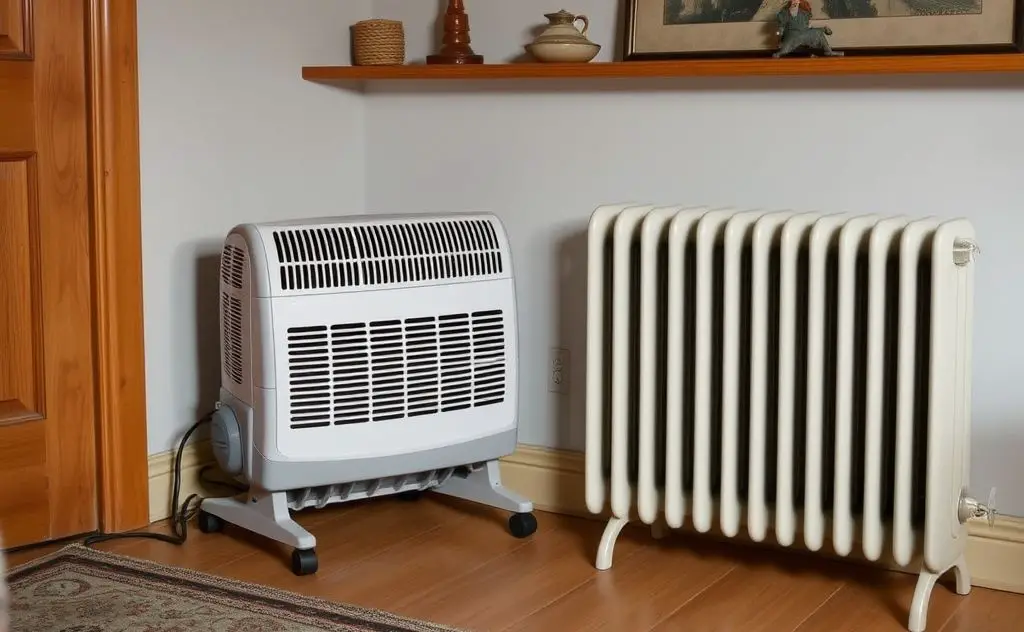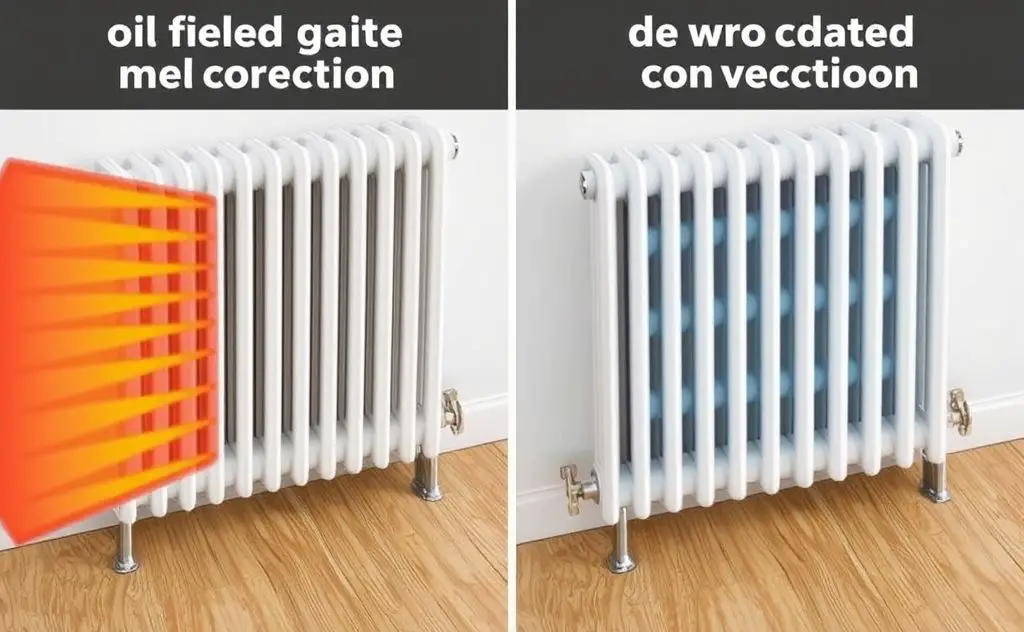Convection heaters provide rapid heating through circulating warm air, making them ideal for quick warmth in small spaces, while oil-filled radiators offer steady, long-lasting heat with greater energy efficiency, suitable for larger areas or prolonged use.
Choosing between a convection heater and an oil filled radiator can be tricky. Both have unique benefits depending on your heating needs. This guide breaks down the key differences to help you decide.

How Convection Heaters Work
Convection heaters use an electric element to warm air inside the unit. The hot air rises, creating a current that circulates warmth throughout the room. Many models include fans to speed up this process.
Key Features of Convection Heaters
- Fast heating – warms rooms quickly
- Lightweight and portable
- Often include fans for better air circulation
- Some models have adjustable thermostats
For those needing more details on convection technology, we have an in-depth guide.

How Oil Filled Radiators Work
Oil filled radiators heat diathermic oil inside sealed columns. The oil retains heat well, continuing to warm a room even after the unit turns off. Learn more about oil radiator operation in our dedicated article.
Key Features of Oil Radiators
- Long-lasting heat retention
- Silent operation (no fans)
- Stable, even heat distribution
- Often include timers and thermostats
Head-to-Head Comparison
| Feature | Convection Heater | Oil Filled Radiator |
|---|---|---|
| Heating Speed | Fast (minutes) | Slow (30+ minutes) |
| Heat Retention | Poor (cools quickly) | Excellent (hours) |
| Energy Efficiency | Lower (constant power needed) | Higher (cycles on/off) |
| Noise Level | Moderate (with fan) | Silent |
| Safety | Hot surfaces | Cooler surfaces |
Which is More Cost Effective?
Both types consume the same wattage when running. However, oil radiators often cost less to operate because:
- They retain heat longer between cycles
- They maintain temperature with less power
- Their thermostats are more precise
According to Energy.gov, proper use of thermostats can reduce heating costs by up to 10% annually.
Best Use Cases
When to Choose a Convection Heater
- Quick heat needed in small spaces
- Temporary or occasional heating
- Areas where portability matters
When to Choose an Oil Radiator
- Long heating sessions
- Bedrooms or living areas
- Quiet environments
- Energy efficiency priority
Safety Considerations
Both types are generally safe when used properly. Oil radiators have cooler surfaces, making them better for homes with children or pets. Convection heaters should never be covered or placed near flammable materials.
For those considering other heating options, our guide on oil radiator pros and cons provides additional insights.
Maintenance Requirements
Convection heaters need occasional dusting of internal elements. Oil radiators require no maintenance beyond surface cleaning. Neither type needs refilling – the oil in radiators is permanently sealed.
According to Consumer Reports, proper maintenance can extend heater lifespan by several years.
Environmental Impact
Both types run on electricity. Their environmental impact depends on your local power source. Oil radiators may have a slight edge by using less electricity overall.

